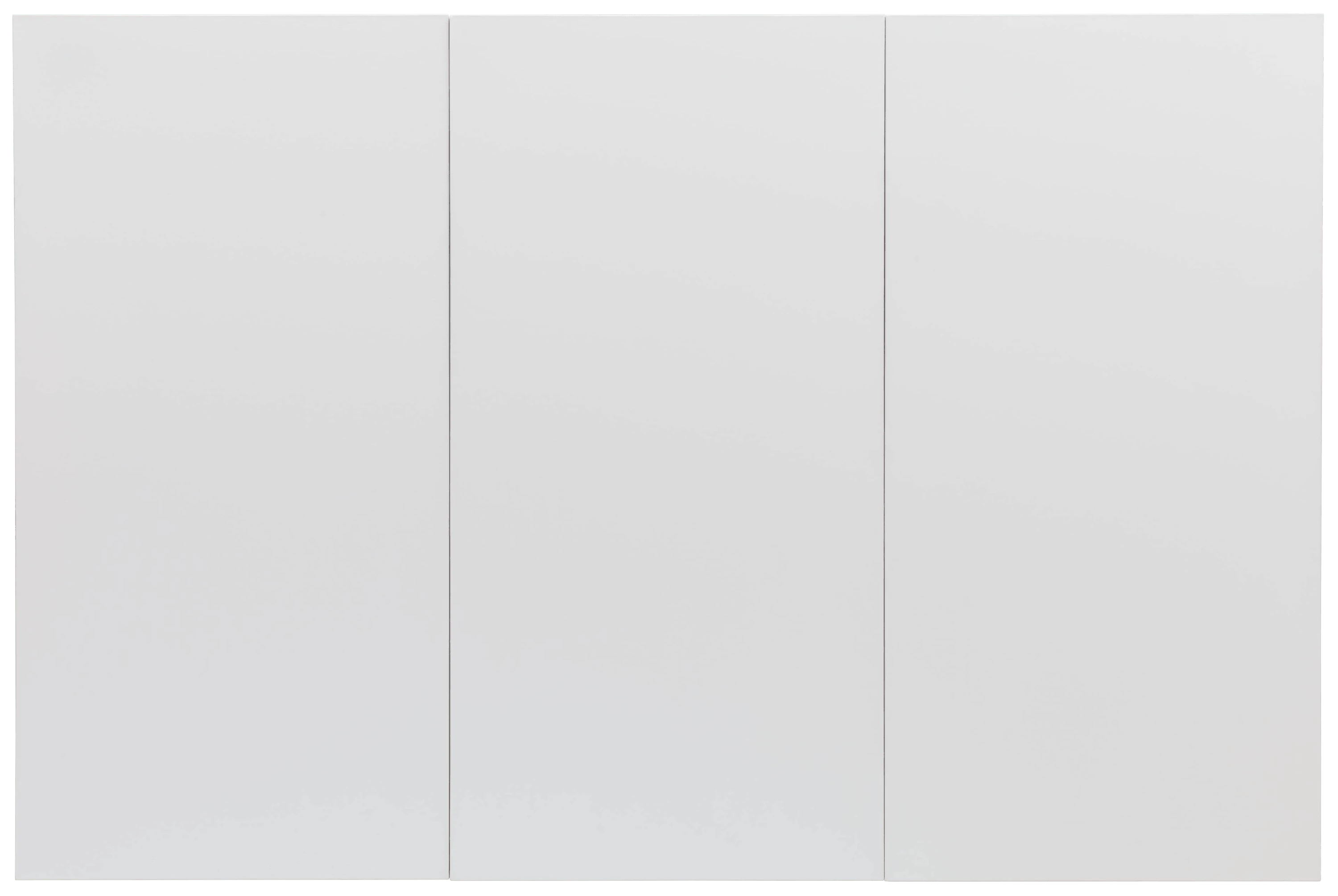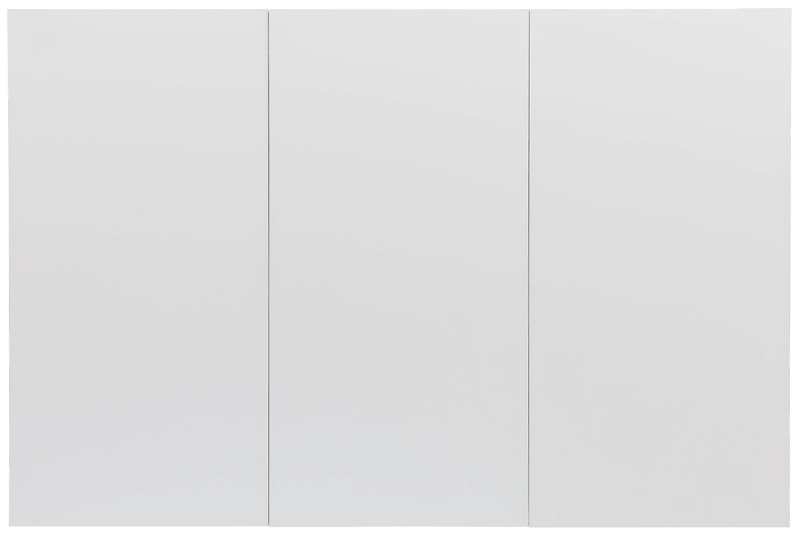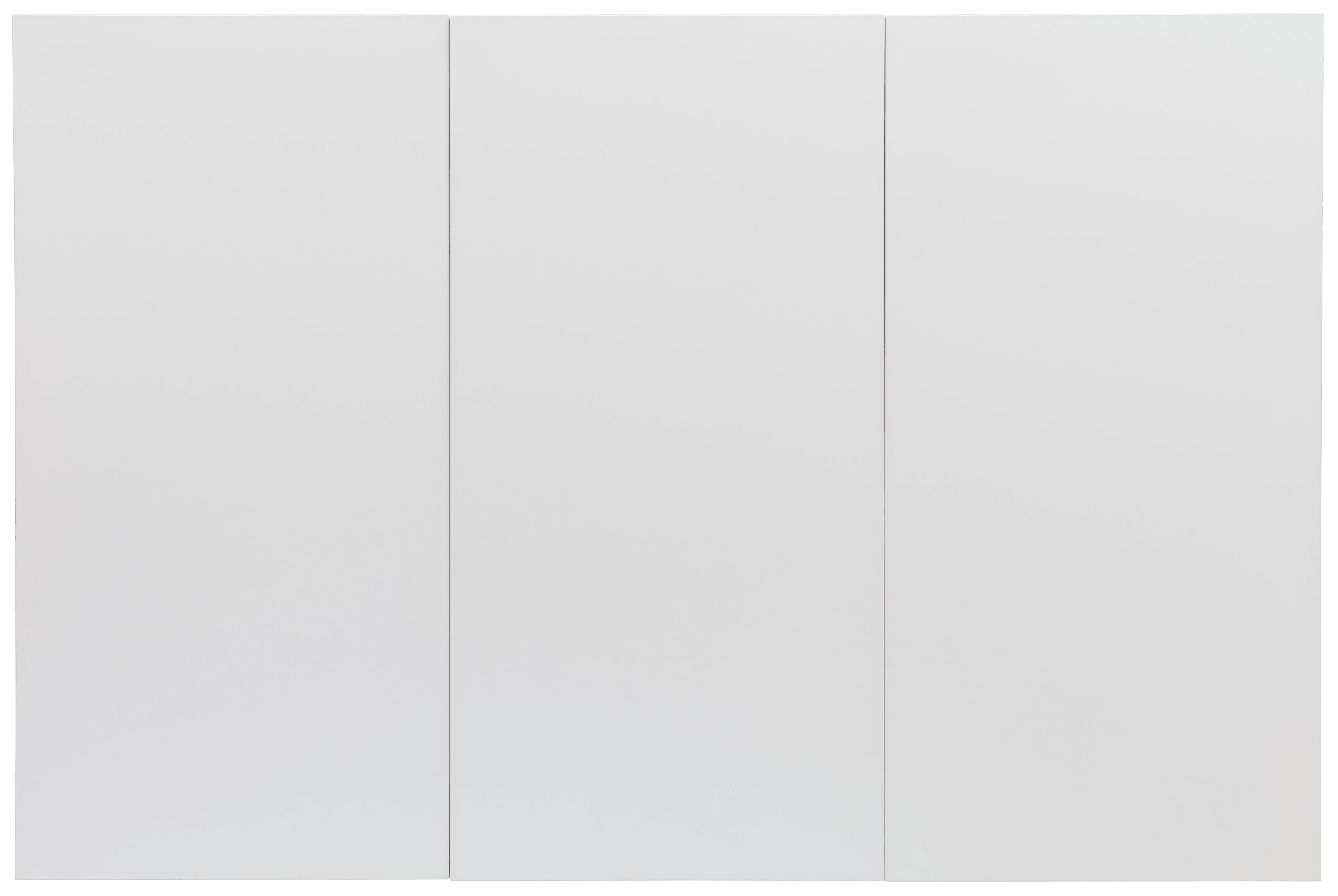


In 1951 the painter Robert Rauschenberg was 26, fresh out of the U.S. Navy, and studying at the experimental Black Mountain College under the famed Bauhaus colorist Josef Albers. Albers rigid formalism made young Rauschenberg crazy. Robert eventually shook the art world by blending painting and sculpture with objects he called combines, but in 1951 he made a series of five more subtly subversive artworks. He called them the white paintings.
The artwork above is a triptych, a formal composition used for religious art during the Renaissance and Middle Ages. But Rauschenberg’s canvases appear empty. Did he just put raw canvasses on the wall? Had he done anything to them? Was this art, or was it satire?
The White Paintings were not the first of their kind. Monochrome paintings trace back to 1617, when the physician and occult philosopher Robert Fludd published an all-black illustration called “Darkness” in his book on the origin of the universe. Monochromatic art continued to be speculated on and joked about, with the 19th century writer and humorist Alphonse Allais describing an exhibition of incoherent arts, including an all-red artwork called “Tomato harvesting by apoplectic cardinals on the shore of the Red Sea” and an all-white painting called “First communion of anemic young girls in the snow.” The cubist painter Jean Metzinger took the idea seriously in 1911, stating in an interview with the Paris Journal, “Who knows if someday, a great painter, looking with scorn on the often brutal game of supposed colorists and taking the seven colors back to the primordial white unity that encompasses them all, will not exhibit completely white canvases, with nothing, absolutely nothing on them.”
These were not real artworks, they were thought-experiments, jokes. But Rauschenberg took the idea of white paintings seriously, applying basic house paint to his canvases, rolling it on like you'd paint a wall. The results were divisive to say the least. They were called a scandal. When shown in 1953 at the Stable Gallery in New York, the art critic James Fitzsimmons described them as a “gratuitously destructive act.”
Experimental composer and Rauschenberg’s close friend, John Cage, was the first to understand the value of the white paintings. Cage recognized that a white painting was good art, not for the skill it took to create, but for the experience it created for a viewer. In Cage’s words, the white paintings were “airports for the lights, shadows and particles” that they interacted with. A white painting forced the viewer to contemplate the space they were in. That contemplation later inspired Cage’s seminal musical composition, called 4’33,’’ a musical arrangement of four minutes and thirty-three seconds of total silence.
With five paintings, Robert Rauschenberg changed the landscape of modernist painting, infuriating critics, opening the way for the burgeoning Minimalist art movement, and forcing viewers to consider the space, light, shadow and time of day that an artwork lives within. Maybe he was trying to stick it to Albers.
...
Got questions, comments or corrections about White Painting, Three Panel? Join the conversation in our Discord, and if you enjoy content like this, consider becoming a member for exclusive essays, downloadables, and discounts in the Obelisk Store.
